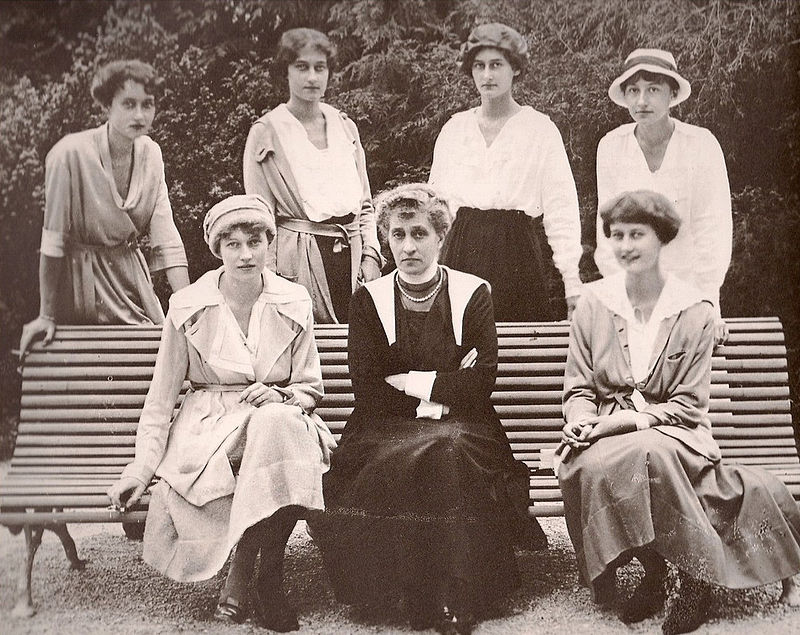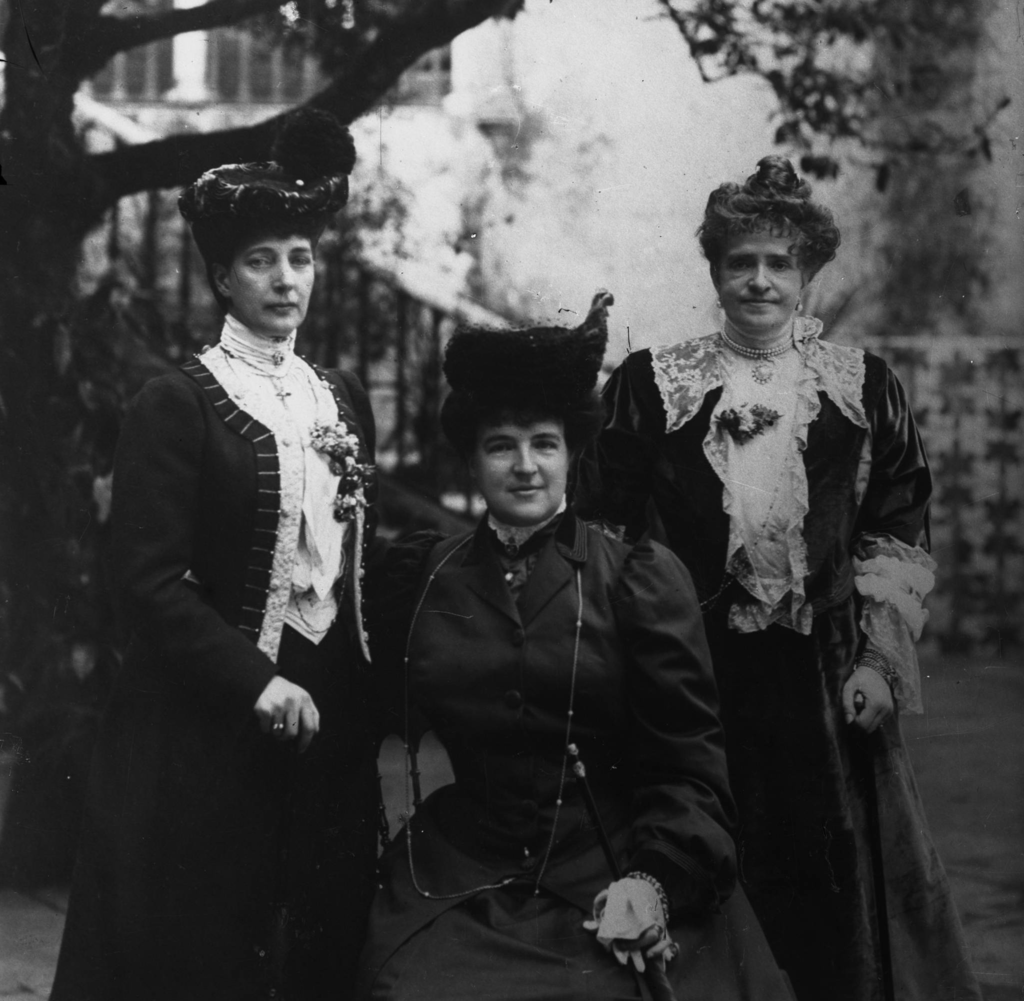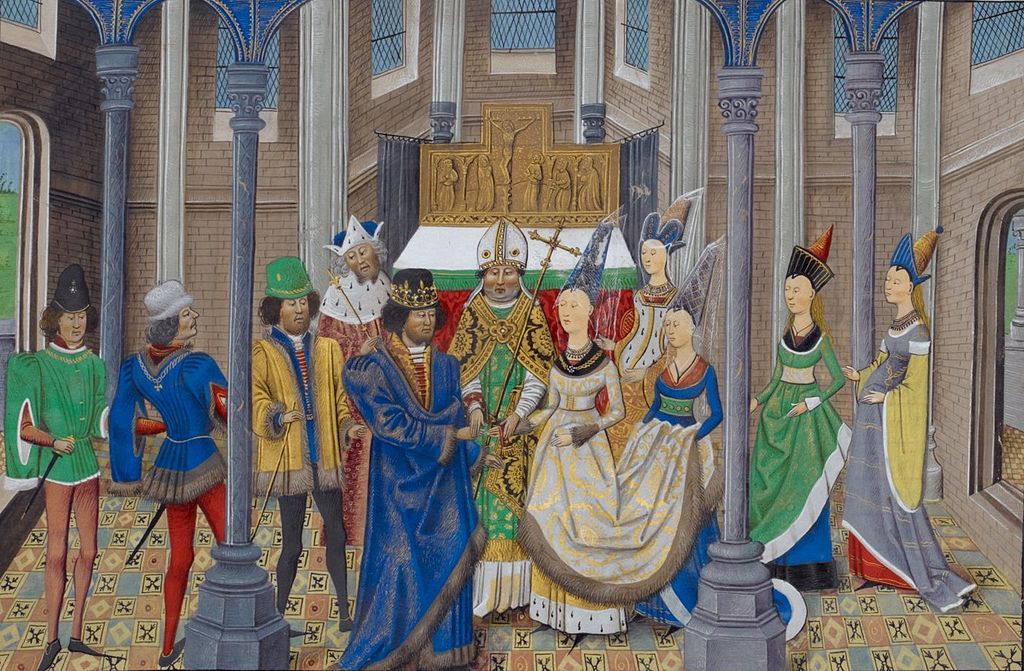by Susan Flantzer © Unofficial Royalty 2015

King Miguel I of Portugal; Credit – Wikipedia
Miguel Maria do Patrocínio João Carlos Francisco de Assis Xavier de Paula Pedro de Alcântara António Rafael Gabriel Joaquim José Gonzaga Evaristo was born on October 26, 1802, in Lisbon, Portugal. Miguel was the seventh of the nine children of King João VI of Portugal and Carlota Joaquina of Spain. He was long rumored to be the biological son of one of Carlota Joaquina’s lovers. During the Napoleonic Wars, he lived in exile with his family in Brazil.
Miguel’s siblings:
- Maria Teresa, Princess of Beira (1793 – 1874), married (1) Pedro Carlos de Borbón y Bragança, Infante of Spain and Portugal, one son (2) Carlos, Infante of Spain, no issue
- Francisco António, Prince of Beira (1795 – 1801), died young
- Infanta Maria Isabel (1797 – 1818), married Ferdinand VII, King of Spain, one daughter, died in second childbirth
- Pedro IV of Portugal/Pedro I of Brazil (1798 – 1834), married (1) Maria Leopoldina of Austria, seven children (2) Amélie of Leuchtenberg, one daughter
- Infanta Maria Francisca (1800 – 1834) first wife of Carlos, Infante of Spain, three sons
- Infanta Isabel Maria (1801 – 1876), unmarried
- Infanta Maria da Assunção (1805 – 1834), unmarried
- Infanta Ana de Jesus Maria (1806 – 1857), married Nuno José Severo, Duke of Loulé, had five children
The Portuguese royal family returned to Portugal in 1821 from their exile in Brazil. Miguel’s father King João VI, who had become King of Portugal in 1816 upon the death of his mother Queen Maria I, continued to reign until he died in 1826. At that time, Miguel’s elder brother Pedro became King of Portugal. Pedro was king for only two months, abdicating in favor of his daughter Maria II. Miguel served as regent for his niece Maria.
As regent, Miguel claimed the Portuguese throne in his own right. This led to a difficult political situation, during which many people were killed, imprisoned, persecuted, or sent into exile, finally culminating in the Portuguese Liberal Wars. Ultimately, Miguel was deposed in 1834 and lived his last 32 years in exile.
During his exile in Baden, Miguel met Adelaide of Löwenstein-Wertheim-Rosenberg, a daughter of Constantine, Hereditary Prince of Löwenstein-Wertheim-Rosenberg and Princess Agnes of Hohenlohe-Langenburg. Adelaide was brought up by her paternal grandparents after the early death of her father. On September 24, 1851, at the age of 20, Adelaide married Miguel, who was 29 years her senior. The couple made their home in Schloss Bronnbach in Bronnbach, in the Grand Duchy of Baden, now in the German state of Baden-Württemberg.

Princess Adelaide of Löwenstein-Wertheim-Rosenberg; Credit – Wikipedia
Miguel and Adelaide had six daughters and a son, all styled as Infanta and Infante of Portugal.
- Infanta Maria das Neves (1852 – 1941), married Alfonso Carlos, Duke of San Jaime, Carlist claimant to the throne of Spain, no issue
- Infante Miguel, Duke of Braganza (1853 – 1927) married (1) Princess Elisabeth of Thurn and Taxis, three children; (2) Princess Maria Theresa of Löwenstein-Wertheim-Rosenberg, eight children
- Infanta Maria Theresa (1855 – 1944), third wife of Archduke Karl Ludwig of Austria, two daughters
- Infanta Maria Josepha (1857 – 1943), second wife of Karl Theodor, Duke in Bavaria, five children
- Infanta Adelgundes (1858 – 1946), married Prince Enrico of Bourbon-Parma, no issue
- Infanta Maria Ana (1861 – 1942), married Guillaume, Grand Duke of Luxembourg, had six daughters
- Infanta Maria Antónia (1862 – 1959), second wife of Robert I, Duke of Parma, twelve children

Miguel and Adelaide with their two eldest children; Credit – Wikipedia
Miguel died while hunting in Bronnbach on November 14, 1866, at the age of 64. Initially, Miguel was buried in his wife’s family’s vault at the Engelberg Monastery in Grossheubach, Bavaria. In 1967, his remains and those of his wife (who had been buried in Ryde on the Isle of Wight, England, where she had died) were transferred to the traditional burial site of the Portuguese royals, the Monastery of São Vicente de Fora in Lisbon.
When Miguel died, all his children were under the age of fifteen. Adelaide continued to raise her children and arranged some rather brilliant marriages for them despite their dubious status. Through the marriages of their many children and grandchildren, Miguel and Adelaide are the ancestors of the current monarchs of Luxembourg, Belgium, and Liechtenstein, as well as pretenders to the thrones of Portugal, Austria, Bavaria, and Italy.
This article is the intellectual property of Unofficial Royalty and is NOT TO BE COPIED, EDITED, OR POSTED IN ANY FORM ON ANOTHER WEBSITE under any circumstances. It is permissible to use a link that directs to Unofficial Royalty.
Portugal Resources at Unofficial Royalty
















